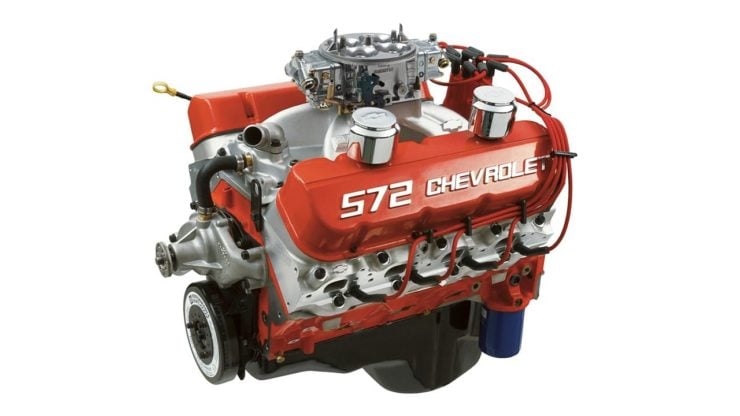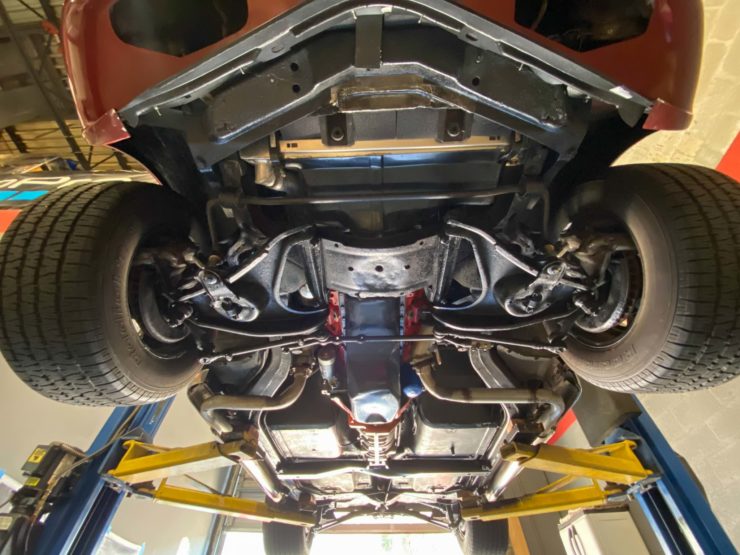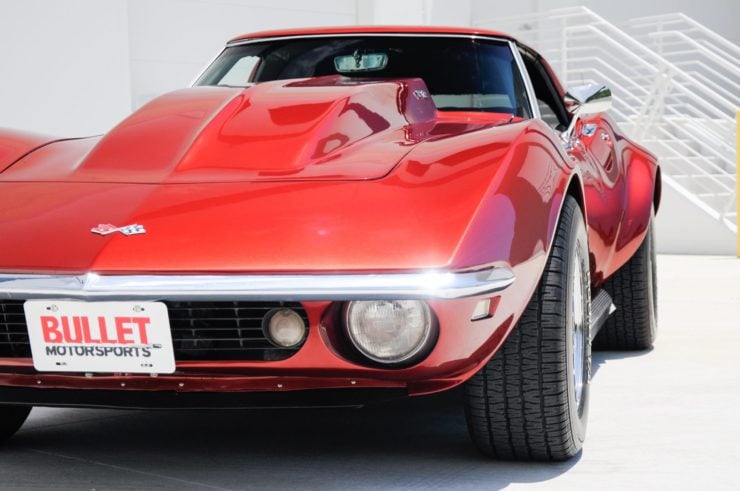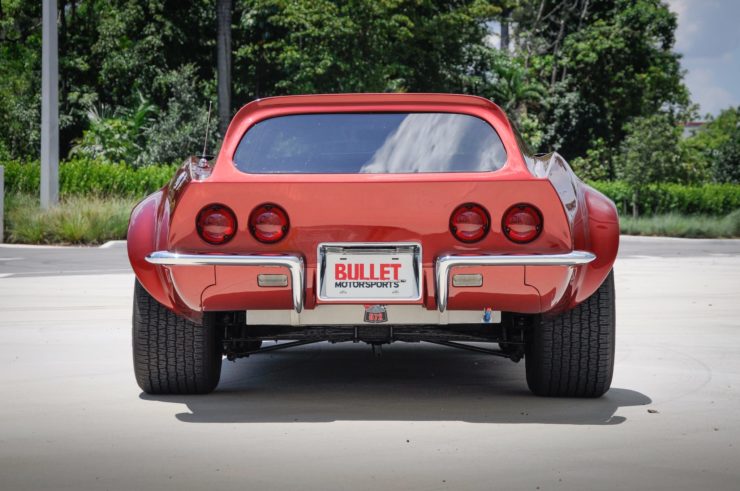A 9.4 Liter Chevrolet Corvette Sportwagon 5-Speed With 727 BHP
[ad_1]
This 1968 Chevrolet Corvette has had a significant rebuild to Sportwagon specification, and it’s now powered by a 9.4 Liter V8 producing 727 bhp and 680 lb ft of torque with power sent back through a 5-speed manual transmission to a Positraction rear end.
The Sportwagon was a modified version of the C3 Corvette that solved one of its biggest drawbacks – the almost total lack of useable trunk space. With the shooting brake style rear end grafted on the Sportwagon became a surprisingly practical Corvette.
Fast Facts – The Chevrolet Corvette Sportwagon
- The Chevrolet Corvette Sportwagon was built using a kit supplied by a small number of manufacturers in the United States, primarily supplied by Chuck Miller, then by John Greenwood in redesigned form.
- The Sportwagon kit included a new fiberglass rear roof section that turned the C3 Corvette into a shooting brake (two-door station wagon), vastly increasing the rear cargo area.
- It’s said that the first Sportwagon design was created for a drummer in a rock ‘n roll band who had a Corvette and wanted to be able to fit his drums in the back.
- The Corvette Sportwagon you see here is a little more extreme than most, it’s powered by a 727 bhp 9.4 liter V8, it has a 5-speed manual gearbox, an LSD rear end, and a high-rise cowl-induction hood.
The C3 Corvette’s One Big Problem
The lack of trunk space was perhaps the biggest issue with the C3 Corvette. The first generation C1 Corvette had a decent trunk by sports car standards, the C2 had some space though it was smaller, and the C3 had even less still.


With no rear opening trunk lid the only access to the C3 trunk space is through the interior, with one or both of the seat backs folded down. The coupe had a little more room than the convertible, as the folding top was stored in the same cavity.
Now before I get a cascade of furious emails from the Corvette faithful let me just enunciate that the Corvette is a sports car, it’s not designed to be practical or particularly convenient – it’s designed to look good and go fast.
That said, we all need a little trunk space from time to time for things like groceries, road trip luggage, and perhaps the occasional pair of skis.
The Corvette Sportwagon
As the story goes, the idea that led to the creation of the Sportwagon was actually conceived of by a drummer in a rock n’ roll band who owned a Corvette and wanted space to carry his drums.


The man his discussed this issue was Chuck Miller, to his credit Miller set to work and solved the problem by developing a fiberglass rear end that would turn the Corvette into a shooting brake – essentially a two-door station wagon.
The fiberglass body of the Corvette lent itself particularly well to this addition, the new roof could be grafted on fiberglass-to-fiberglass and once fitted it offered vastly more space for luggage, groceries, or a drum kit of course.
The original Miller design featured side windows, a turned-up rear roofline, and a non-opening rear window. He advertised them through Eckler’s catalogs and before long the orders started to roll in.
A later design was developed by Corvette specialists Burt and John Greenwood of Greenwood Corvettes. They spent some time reworking the aesthetics and the functionality of the rear end, better integrating it and adding a very useful hatchback rear end – the trunk space could now be accessed through the rear of the car.


The vast majority of Sportwagon kits that were sold were sold by Greenwood, and they’re widely considered to be the more desirable variant.
No one knows exactly how many were made as they were largely sold as kits and built by individuals. When they do come up for sale they tend to attract more attention than the regular C3 Corvette for obvious reasons.
The 1968 Chevrolet Corvette Sportwagon Shown Here
The car you see here is undoubtably the most extreme, and the most powerful, Corvette Sportwagon we’ve ever seen.


Exactly who built it isn’t known, what we do know is that it’s powered by a 572 cubic inch (9.4 liter) General Motors ZZ572/720R crate engine producing 727 bhp at 6,300 rpm and 680 lb ft of torque at 6,800 rpm.
Power is sent back through a Hurst-shifted Richmond Gear 5-speed manual transmission with a Powergrip HD clutch from Ram Clutches and into a Positraction rear end. The car also has four-wheel disc brakes, fender flares, a high-rise cowl-induction hood, and a slew of other mods.
If you’d like to read more about this highly unusual C3 Corvette or place a bid you can visit the listing here on Bring A Trailer – it’s being auctioned out of Fort Lauderdale, Florida.

















Images courtesy of Bring A Trailer

Ben has had his work featured on CNN, Popular Mechanics, Smithsonian Magazine, Road & Track Magazine, the official Pinterest blog, the official eBay Motors blog, BuzzFeed, and many more.
Silodrome was founded by Ben back in 2010, in the years since the site has grown to become a world leader in the alternative and vintage motoring sector, with millions of readers around the world and many hundreds of thousands of followers on social media.

[ad_2]
Source link






